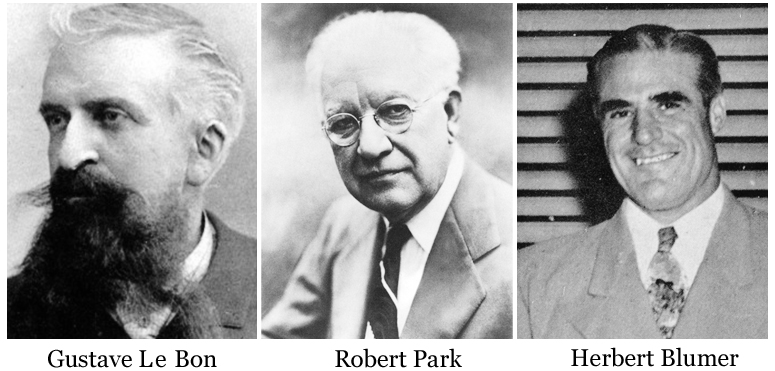History
Contagion theory is a theory of collective behavior which explains that the crowd can cause a hypnotic impact on individuals. The theory is first developed by Gustave Le Bon in his book called “the crowd: a study of popular mind in France” in 1885.

Source: Piotr Spolitak/Adobe Stock
As a historian and philosopher his works reflected more of political and social opinions. His theories were improved by sociologist Robert Park and later by Herbert Blumer and explained how the crowd influenced the individuals dynamically within a group in a socio-psychological aspect.
These entire theories share a basic idea of how individual can act briefly unreasonable or inconsistent within a group and become normal when they are not in it.

Introduction
Contagion is a very old term which refers to anything that spreads from person to person like a disease such as chicken pox or flu.
The theory adapted this idea in a sociological basis and stated as the transmission of ideas or even irrational behavior collectively displayed by an individual when engaged in a group. It is stated that large number of people are influenced by the contagious behavior of the group and avoids their individual responsibility.
Contagion Theory
The theory is further developed by the 3 socialist in different periods:
1. Gustave Le Bon :
“The crowd- a study of the popular mind” written by Gustave Le Bon paved the way to the development of collective behavior. He focused on the normal individual’s behavior turning irrational or violent accordingly to the nature of the crowd.
He observed that the individual behavior would be demoted to the level of the most noisiest or sadistic person in the crowd. This mass behavior is uncontrollable by an individual. The patterns of behavior are greatly influenced by the anonymity of the person in the group and thus are not anxious about the aftereffects.
The next factor is the willingness to sacrifice through collective thinking as a group rather than thinking personally. Last factor is when people become unaware of their behavior and they may engage in behavior that they find daring to attempt.
2. Robert Park :
Gustave’s theory were reformed by Robert Park and made them more pragmatic and rational. He came up with a sociological explanation for how people mimic and support each other’s activities. The people are more interacted when experiencing stress and so they are attached to each other.
The thoughts and actions are thus affected by the members of the group and the individuals will tend to reflect the behavior collectively. The members can be influenced by an individual in the group which tends to follow that person instinctively. Any person can act as the leader of the group by acting authoritatively and this position can be varied according to the situation.
3. Herbert Blumer :
He is an American sociologist have conceptualized the collective behavior in a more specific way. He introduced the term “milling” and according to him during milling, people become extremely conscious and respond to each other spontaneously avoiding the external provocations.
A person’s independent actions are eliminated through milling which results in displaying of curious and unreasonable behavioral patterns. Thus in a crowd the individual behavior of members are converged and they do things which they deemed impossible. He concluded his findings with the possibility of emergence of a new social institution or a social change as the result of this extreme collective behavior.
The studies on the collective behavior among the scientists are still going on to provide a more specific reasoning for the cause of this mass conduct.
Example
- If rock concert is being enjoyed by majority of people in the crowd, there is a tendency to pay their attention in the concert by the minority who were not really enjoying the concert.
- If a large number of people say that a movie is good, it is common that most of the people will not have a separate opinion. It can be observed that people tend to follow a major idea or opinion rather than making one of their own.
what are the type of contagion theory
it was a good review in short… thankyou very much
Short and simple, very nice
Cool stuff
Thank you…
The material is good, however, I was searching for the link between contagion to disease infection.